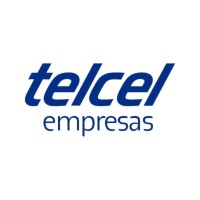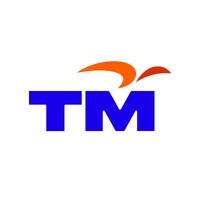
Mitel Company Cyber Security Posture
mitel.comPowering more than 2 billion connections every day, Mitel helps businesses connect, collaborate and take care of customers.
Mitel Company Details
mitel
3913 employees
110761.0
517
Telecommunications
mitel.com
Scan still pending
MIT_2761140
In-progress
Between 900 and 1000
This score is AI-generated and less favored by cyber insurers, who prefer the TPRM score.
 Mitel Global Score
Mitel Global Score.png)

Mitel Company Scoring based on AI Models
| Model Name | Date | Description | Current Score Difference | Score |
|---|---|---|---|---|
| AVERAGE-Industry | 03-12-2025 | This score represents the average cybersecurity rating of companies already scanned within the same industry. It provides a benchmark to compare an individual company's security posture against its industry peers. | N/A | Between 900 and 1000 |
Mitel Company Cyber Security News & History
| Entity | Type | Severity | Impact | Seen | Url ID | Details | View |
|---|---|---|---|---|---|---|---|
| Mitel | Cyber Attack | 50 | 1 | 1/2025 | MIT000013025 | Link | |
Rankiteo Explanation : Attack without any consequencesDescription: Mitel SIP phones experienced a variant of Mirai-based Aquabotv3 botnet attack, targeting a vulnerability (CVE-2024-41710) across several models, including the 6970 Conference Unit up to firmware version R6.4.0.HF1. This attack allowed Aquabotv3 to recruit the phones into a DDoS botnet potentially disrupting communications. Mitel had issued firmware updates to address this issue, but the emergence of PoC exploit code and subsequent attack highlights the ongoing threat to IoT devices. The attack could lead to operational disruptions and compromise the confidentiality and integrity of communications. | |||||||
| Mitel | Vulnerability | 100 | 6 | 04/2022 | MIT197291022 | Link | |
Rankiteo Explanation : Attack threatening the economy of a geographical regionDescription: The Lorenz ransomware gang used a critical vulnerability in Mitel MiVoice VOIP appliances to breach enterprises, using their phone systems for initial access to their corporate networks. Lorenz exploited CVE-2022-29499, a remote code execution vulnerability impacting the Mitel Service Appliance component of MiVoice Connect, and obtained a reverse shell and subsequently used Chisel as a tunnelling tool to pivot into the environment. These devices are used by organizations in critical sectors worldwide (including government agencies), with over 19,000 devices currently exposed to attacks over the Internet. Though Mitel has addressed the vulnerability by releasing security patches in early June 2022 after releasing a remediation script for affected MiVoice Connect versions in April, the threat actors recently exploited other security flaws impacting Mitel devices in record-breaking DDoS amplification attacks. | |||||||
| Mitel | Vulnerability | 25 | 1 | 1/2025 | MIT000013125 | Link | |
Rankiteo Explanation : Attack without any consequencesDescription: In January 2025, a variant of the Mirai-based botnet Aquabot, known as Aquabotv3, began targeting Mitel SIP phones by exploiting the CVE-2024-41710 vulnerability in models 6800, 6900, and 6900w series including the 6970 Conference Unit. This vulnerability, discovered by researchers, could allow an attacker with administrative privilege to conduct command injection attacks. Mitel had released firmware updates in mid-2024 to address the issue. Before this, no attacks exploiting this flaw were reported. Aquabotv3's unique signal handling suggests the attackers might be preparing for more stealthy and possibly undetectable future variants. As a Mitel-based product, the affected SIP phones could be part of critical communication systems, and their compromise could lead to significant disruptions. | |||||||
Mitel Company Subsidiaries

Powering more than 2 billion connections every day, Mitel helps businesses connect, collaborate and take care of customers.
Access Data Using Our API

Get company history
.png)
Mitel Cyber Security News
Mitel’s OpenScape Voice Solution Achieves JITC Certification Following Extensive Testing For Use By U.S. Department of Defense
It protects call and conference audio, offers secure access for administration, and utilizes only encrypted connections within its ecosystem.
CISA Flags Critical Flaws in Mitel and Oracle Systems Amid Active Exploitation
CISA on Tuesday added three flaws impacting Mitel MiCollab and Oracle WebLogic Server to its Known Exploited Vulnerabilities (KEV) catalog, citing evidence of ...
Critical Vulnerabilities in Mitel SIP Phones Let Attackers Inject Malicious Commands
Researchers found two major flaws in Mitel SIP phones that let attackers run commands and upload malicious files.
CISA warns of critical Oracle, Mitel flaws exploited in attacks
CISA has warned U.S. federal agencies to secure their systems against critical vulnerabilities in Oracle WebLogic Server and Mitel MiCollab ...
Mitel SIP Phone Flaws Allow Attackers to Inject Malicious Commands
The command injection vulnerability (CVE-2025-47188) stems from insufficient sanitization of user-supplied input in the phones' software, ...
Mitel MiCollab zero-day and PoC exploit unveiled
A zero-day vulnerability in Mitel MiCollab can be exploited to read files containing sensitive data - and there's a PoC exploit.
Malware Found Targeting ‘Mitel SIP Phones’: What You Need to Know
Akamai have found attackers exploiting a known vulnerability to load malware onto what the thought where Mitel Sip Phones.
Aquabot Botnet Targeting Vulnerable Mitel Phones
The Mirai-based Aquabot botnet has been targeting a vulnerability in Mitel SIP phones for which a proof-of-concept (PoC) exploit exists.
Mitel MiCollab VoIP Software: Zero-Day Vulnerability Alert
Researchers are warning of a newly discovered zero-day vulnerability in widely used VoIP telephony software.

Mitel Similar Companies

Idea Cellular Ltd
Idea Cellular is an Aditya Birla Group Company, India's first truly multinational corporation. Idea is a pan-India integrated GSM operator offering 2G and 3G services, and has its own NLD and ILD operations, and ISP license. With revenue in excess of $4 billion; revenue market share of 18%; and subs

TDC Song
TDC Song has been part of TDC Group since year 2004. Company's name was changed into TDC in all Nordic countries in 2008. Please see www.tdc.com, www.tdc.se, www.tdc.fi and www.tdc.no. The story of TDC has been termed by many as a true business adventure that started small with only 22 subscribe

Telcel
Telcel (Radiomóvil Dipsa) es subsidiaria de América Móvil, uno de los mayores proveedores de comunicaciones celulares de Latinoamérica, grupo líder con inversiones en telecomunicaciones en varios países del continente americano. Telcel es la empresa de telefonía celular líder en México. Nuestra s

Telekom Malaysia
TM is the national connectivity and digital infrastructure provider and Malaysia’s leading integrated telco; offering a comprehensive suite of communication services and solutions in fixed (telephony and broadband), mobility, content, WiFi, ICT, Cloud and smart services. TM is driven by stakeholder

Airtel Business
The B2B arm of Bharti Airtel, we are India's leading provider of secure and reliable connectivity, technology, and communications solutions. Our vast network spans across India, the US, Europe, Africa, the Middle East, Asia-Pacific, and SAARC, enabling us to serve businesses of all sizes and industr

AT&T
We understand that our customers want an easier, less complicated life. We’re using our network, labs, products, services, and people to create a world where everything works together seamlessly, and life is better as a result. How will we continue to drive for this excellence in innovation?

Frequently Asked Questions (FAQ) on Cybersecurity Incidents
Mitel CyberSecurity History Information
Total Incidents: According to Rankiteo, Mitel has faced 3 incidents in the past.
Incident Types: The types of cybersecurity incidents that have occurred include ['Cyber Attack', 'Vulnerability'].
Total Financial Loss: The total financial loss from these incidents is estimated to be {total_financial_loss}.
Cybersecurity Posture: The company's overall cybersecurity posture is described as Powering more than 2 billion connections every day, Mitel helps businesses connect, collaborate and take care of customers..
Detection and Response: The company detects and responds to cybersecurity incidents through {description_of_detection_and_response_process}.
Incident Details
Incident 1: Ransomware Attack
Title: {Incident_Title}
Description: {Brief_description_of_the_incident}
Date Detected: {Detection_Date}
Date Publicly Disclosed: {Disclosure_Date}
Date Resolved: {Resolution_Date}
Type: {Type_of_Attack}
Attack Vector: {Attack_Vector}
Vulnerability Exploited: {Vulnerability}
Threat Actor: {Threat_Actor}
Motivation: {Motivation}
Incident 2: Data Breach
Title: {Incident_Title}
Description: {Brief_description_of_the_incident}
Date Detected: {Detection_Date}
Date Publicly Disclosed: {Disclosure_Date}
Date Resolved: {Resolution_Date}
Type: {Type_of_Attack}
Attack Vector: {Attack_Vector}
Vulnerability Exploited: {Vulnerability}
Threat Actor: {Threat_Actor}
Motivation: {Motivation}
Common Attack Types: The most common types of attacks the company has faced are ['Vulnerability'].
Identification of Attack Vectors: The company identifies the attack vectors used in incidents through {description_of_identification_process}.
Impact of the Incidents
Incident 1: Ransomware Attack
Financial Loss: {Financial_Loss}
Data Compromised: {Data_Compromised}
Systems Affected: {Systems_Affected}
Downtime: {Downtime}
Operational Impact: {Operational_Impact}
Conversion Rate Impact: {Conversion_Rate_Impact}
Revenue Loss: {Revenue_Loss}
Customer Complaints: {Customer_Complaints}
Brand Reputation Impact: {Brand_Reputation_Impact}
Legal Liabilities: {Legal_Liabilities}
Identity Theft Risk: {Identity_Theft_Risk}
Payment Information Risk: {Payment_Information_Risk}
Incident 2: Data Breach
Financial Loss: {Financial_Loss}
Data Compromised: {Data_Compromised}
Systems Affected: {Systems_Affected}
Downtime: {Downtime}
Operational Impact: {Operational_Impact}
Conversion Rate Impact: {Conversion_Rate_Impact}
Revenue Loss: {Revenue_Loss}
Customer Complaints: {Customer_Complaints}
Brand Reputation Impact: {Brand_Reputation_Impact}
Legal Liabilities: {Legal_Liabilities}
Identity Theft Risk: {Identity_Theft_Risk}
Payment Information Risk: {Payment_Information_Risk}
Average Financial Loss: The average financial loss per incident is {average_financial_loss}.
Commonly Compromised Data Types: The types of data most commonly compromised in incidents are {list_of_commonly_compromised_data_types}.
Incident 1: Ransomware Attack
Entity Name: {Entity_Name}
Entity Type: {Entity_Type}
Industry: {Industry}
Location: {Location}
Size: {Size}
Customers Affected: {Customers_Affected}
Incident 2: Data Breach
Entity Name: {Entity_Name}
Entity Type: {Entity_Type}
Industry: {Industry}
Location: {Location}
Size: {Size}
Customers Affected: {Customers_Affected}
Response to the Incidents
Incident 1: Ransomware Attack
Incident Response Plan Activated: {Yes/No}
Third Party Assistance: {Yes/No}
Law Enforcement Notified: {Yes/No}
Containment Measures: {Containment_Measures}
Remediation Measures: {Remediation_Measures}
Recovery Measures: {Recovery_Measures}
Communication Strategy: {Communication_Strategy}
Adaptive Behavioral WAF: {Adaptive_Behavioral_WAF}
On-Demand Scrubbing Services: {On_Demand_Scrubbing_Services}
Network Segmentation: {Network_Segmentation}
Enhanced Monitoring: {Enhanced_Monitoring}
Incident 2: Data Breach
Incident Response Plan Activated: {Yes/No}
Third Party Assistance: {Yes/No}
Law Enforcement Notified: {Yes/No}
Containment Measures: {Containment_Measures}
Remediation Measures: {Remediation_Measures}
Recovery Measures: {Recovery_Measures}
Communication Strategy: {Communication_Strategy}
Adaptive Behavioral WAF: {Adaptive_Behavioral_WAF}
On-Demand Scrubbing Services: {On_Demand_Scrubbing_Services}
Network Segmentation: {Network_Segmentation}
Enhanced Monitoring: {Enhanced_Monitoring}
Incident Response Plan: The company's incident response plan is described as {description_of_incident_response_plan}.
Third-Party Assistance: The company involves third-party assistance in incident response through {description_of_third_party_involvement}.
Data Breach Information
Incident 2: Data Breach
Type of Data Compromised: {Type_of_Data}
Number of Records Exposed: {Number_of_Records}
Sensitivity of Data: {Sensitivity_of_Data}
Data Exfiltration: {Yes/No}
Data Encryption: {Yes/No}
File Types Exposed: {File_Types}
Personally Identifiable Information: {Yes/No}
Prevention of Data Exfiltration: The company takes the following measures to prevent data exfiltration: {description_of_prevention_measures}.
Handling of PII Incidents: The company handles incidents involving personally identifiable information (PII) through {description_of_handling_process}.
Ransomware Information
Incident 1: Ransomware Attack
Ransom Demanded: {Ransom_Amount}
Ransom Paid: {Ransom_Paid}
Ransomware Strain: {Ransomware_Strain}
Data Encryption: {Yes/No}
Data Exfiltration: {Yes/No}
Ransom Payment Policy: The company's policy on paying ransoms in ransomware incidents is described as {description_of_ransom_payment_policy}.
Data Recovery from Ransomware: The company recovers data encrypted by ransomware through {description_of_data_recovery_process}.
Regulatory Compliance
Incident 1: Ransomware Attack
Regulations Violated: {Regulations_Violated}
Fines Imposed: {Fines_Imposed}
Legal Actions: {Legal_Actions}
Regulatory Notifications: {Regulatory_Notifications}
Incident 2: Data Breach
Regulations Violated: {Regulations_Violated}
Fines Imposed: {Fines_Imposed}
Legal Actions: {Legal_Actions}
Regulatory Notifications: {Regulatory_Notifications}
Regulatory Frameworks: The company complies with the following regulatory frameworks regarding cybersecurity: {list_of_regulatory_frameworks}.
Ensuring Regulatory Compliance: The company ensures compliance with regulatory requirements through {description_of_compliance_measures}.
Lessons Learned and Recommendations
Incident 1: Ransomware Attack
Lessons Learned: {Lessons_Learned}
Incident 2: Data Breach
Lessons Learned: {Lessons_Learned}
Incident 1: Ransomware Attack
Recommendations: {Recommendations}
Incident 2: Data Breach
Recommendations: {Recommendations}
Key Lessons Learned: The key lessons learned from past incidents are {list_of_key_lessons_learned}.
Implemented Recommendations: The company has implemented the following recommendations to improve cybersecurity: {list_of_implemented_recommendations}.
References
Additional Resources: Stakeholders can find additional resources on cybersecurity best practices at {list_of_additional_resources}.
Investigation Status
Incident 1: Ransomware Attack
Investigation Status: {Investigation_Status}
Incident 2: Data Breach
Investigation Status: {Investigation_Status}
Communication of Investigation Status: The company communicates the status of incident investigations to stakeholders through {description_of_communication_process}.
Stakeholder and Customer Advisories
Incident 1: Ransomware Attack
Stakeholder Advisories: {Stakeholder_Advisories}
Customer Advisories: {Customer_Advisories}
Incident 2: Data Breach
Stakeholder Advisories: {Stakeholder_Advisories}
Customer Advisories: {Customer_Advisories}
Advisories Provided: The company provides the following advisories to stakeholders and customers following an incident: {description_of_advisories_provided}.
Initial Access Broker
Incident 1: Ransomware Attack
Entry Point: {Entry_Point}
Reconnaissance Period: {Reconnaissance_Period}
Backdoors Established: {Backdoors_Established}
High Value Targets: {High_Value_Targets}
Data Sold on Dark Web: {Yes/No}
Incident 2: Data Breach
Entry Point: {Entry_Point}
Reconnaissance Period: {Reconnaissance_Period}
Backdoors Established: {Backdoors_Established}
High Value Targets: {High_Value_Targets}
Data Sold on Dark Web: {Yes/No}
Monitoring and Mitigation of Initial Access Brokers: The company monitors and mitigates the activities of initial access brokers through {description_of_monitoring_and_mitigation_measures}.
Post-Incident Analysis
Incident 1: Ransomware Attack
Root Causes: {Root_Causes}
Corrective Actions: {Corrective_Actions}
Incident 2: Data Breach
Root Causes: {Root_Causes}
Corrective Actions: {Corrective_Actions}
Post-Incident Analysis Process: The company's process for conducting post-incident analysis is described as {description_of_post_incident_analysis_process}.
Corrective Actions Taken: The company has taken the following corrective actions based on post-incident analysis: {list_of_corrective_actions_taken}.
Additional Questions
General Information
Ransom Payment History: The company has {paid/not_paid} ransoms in the past.
Last Ransom Demanded: The amount of the last ransom demanded was {last_ransom_amount}.
Last Attacking Group: The attacking group in the last incident was {last_attacking_group}.
Incident Details
Most Recent Incident Detected: The most recent incident detected was on {most_recent_incident_detected_date}.
Most Recent Incident Publicly Disclosed: The most recent incident publicly disclosed was on {most_recent_incident_publicly_disclosed_date}.
Most Recent Incident Resolved: The most recent incident resolved was on {most_recent_incident_resolved_date}.
Impact of the Incidents
Highest Financial Loss: The highest financial loss from an incident was {highest_financial_loss}.
Most Significant Data Compromised: The most significant data compromised in an incident was {most_significant_data_compromised}.
Most Significant System Affected: The most significant system affected in an incident was {most_significant_system_affected}.
Response to the Incidents
Third-Party Assistance in Most Recent Incident: The third-party assistance involved in the most recent incident was {third_party_assistance_in_most_recent_incident}.
Containment Measures in Most Recent Incident: The containment measures taken in the most recent incident were {containment_measures_in_most_recent_incident}.
Data Breach Information
Most Sensitive Data Compromised: The most sensitive data compromised in a breach was {most_sensitive_data_compromised}.
Number of Records Exposed: The number of records exposed in the most significant breach was {number_of_records_exposed}.
Ransomware Information
Highest Ransom Demanded: The highest ransom demanded in a ransomware incident was {highest_ransom_demanded}.
Highest Ransom Paid: The highest ransom paid in a ransomware incident was {highest_ransom_paid}.
Regulatory Compliance
Highest Fine Imposed: The highest fine imposed for a regulatory violation was {highest_fine_imposed}.
Most Significant Legal Action: The most significant legal action taken for a regulatory violation was {most_significant_legal_action}.
Lessons Learned and Recommendations
Most Significant Lesson Learned: The most significant lesson learned from past incidents was {most_significant_lesson_learned}.
Most Significant Recommendation Implemented: The most significant recommendation implemented to improve cybersecurity was {most_significant_recommendation_implemented}.
References
Most Recent Source: The most recent source of information about an incident is {most_recent_source}.
Most Recent URL for Additional Resources: The most recent URL for additional resources on cybersecurity best practices is {most_recent_url}.
Investigation Status
Current Status of Most Recent Investigation: The current status of the most recent investigation is {current_status_of_most_recent_investigation}.
Stakeholder and Customer Advisories
Most Recent Stakeholder Advisory: The most recent stakeholder advisory issued was {most_recent_stakeholder_advisory}.
Most Recent Customer Advisory: The most recent customer advisory issued was {most_recent_customer_advisory}.
Initial Access Broker
Most Recent Entry Point: The most recent entry point used by an initial access broker was {most_recent_entry_point}.
Most Recent Reconnaissance Period: The most recent reconnaissance period for an incident was {most_recent_reconnaissance_period}.
Post-Incident Analysis
Most Significant Root Cause: The most significant root cause identified in post-incident analysis was {most_significant_root_cause}.
Most Significant Corrective Action: The most significant corrective action taken based on post-incident analysis was {most_significant_corrective_action}.
What Do We Measure?
















Every week, Rankiteo analyzes billions of signals to give organizations a sharper, faster view of emerging risks. With deeper, more actionable intelligence at their fingertips, security teams can outpace threat actors, respond instantly to Zero-Day attacks, and dramatically shrink their risk exposure window.
These are some of the factors we use to calculate the overall score:
Identify exposed access points, detect misconfigured SSL certificates, and uncover vulnerabilities across the network infrastructure.
Gain visibility into the software components used within an organization to detect vulnerabilities, manage risk, and ensure supply chain security.
Monitor and manage all IT assets and their configurations to ensure accurate, real-time visibility across the company's technology environment.
Leverage real-time insights on active threats, malware campaigns, and emerging vulnerabilities to proactively defend against evolving cyberattacks.




